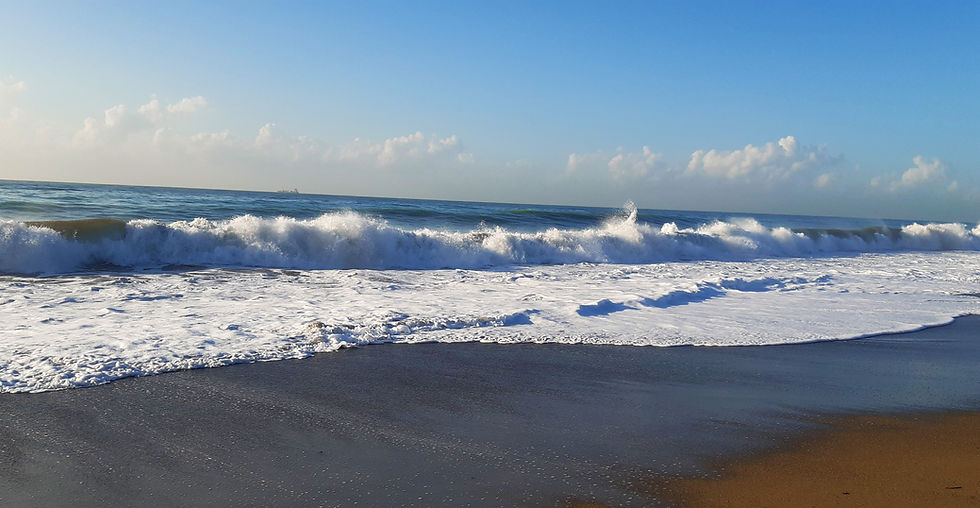Stewards of Change
- S.A.G.E. Vision

- Aug 27, 2024
- 4 min read
As we begin preparing our learning environments for the upcoming school year, a familiar feeling of curiosity emerges. As facilitators of learning, we are privileged to welcome young, impressionable, and emergent learners into our classrooms each year with the hope that, slowly and steadily, they take ownership of this unique space. Our experience of observing the evolution of learner agency comes from embedding key attributes of stewardship into the daily interactions of each day. Over time and through real-world applications, each contributing member within our class community learns that a steward is a responsible citizen who takes care of themselves, others, and the environment they are connected to. From the very first day of school, we wholeheartedly express to each of our third-grade thinkers the importance of practicing and improving upon their ability to think deeply. It is through one’s ability to think that meaningful long-term understanding develops, along with hidden passions to be uncovered.
In all our years of working with elementary-aged learners, it never fails to amaze us how capable they truly are when given the time, space, and encouragement to express themselves creatively. Whether they are engaged in building metacognitive pages, presentations, or composing writing pieces, time and time again, we have the pleasure of witnessing them intrinsically embracing the learning opportunities presented. To go a bit deeper, the excitement they express when connected to stewardship initiatives such as raising brook trout or bobwhite quail gives us a front-row view into the essence of learning. Just as the events of “real life” unfold, we’ve experienced years of great success in numbers released and some that resulted in disappointment because problems occurred. In either case, as their role of simulating the natural environments of these amazing creatures within the classroom comes to an end, they are then released into their natural habitat. As a means to uncover the significant role each organism plays within its environment, a sense of productive citizenship develops in the pride each learner gains while building understanding and caring for these unique beings.
Young children understand very well when there is meaning connected to what they are doing. They know the difference between being assigned “busy work” or having the autonomy to “construct understanding.” Even greater, when it comes to leading with diligence, the belief that they are capable of meeting high expectations supports them in reaching their potential. As we’ve experienced, attainment can be miraculous when trusted relationships exist between the learner and facilitator and their connection with the learning opportunities provided within the environment itself. As such, there is nothing greater than experiencing the enjoyment of the learning process flourishing when these four dynamic elements merge. The love for meaningful growth a child experiences does not come from the teacher telling them how to do something. Rather, it ignites when learners themselves connect to the why behind what they are doing as they are given the chance to engage.
To this end, by framing the key elements of stewardship and how the evolution of thought can be transformative, we expand our awareness of the need educational institutions have for constructing learner-centered ecosystems. If our systems remain locked into and prioritize fixed curriculums, testing cycles, or the utilization of assignments that are not in alignment with a learner’s development, we miss opportunities to impact the well-being of learners, families, and communities. Despite our enthusiasm for building learner-centered ecosystems, our experiences within the public sector have taught us how the design of the one-size-fits-all system can diminish engagement. This simply should not be the unspoken battle educators face while attempting to cultivate optimal environments of creativity and progression. With this understanding, our commitment to the growth of each unique learner will continue to be central to our upcoming year. For us, there is no other path that holds the possibility of shifting a culture of learning for enjoyment and meaningful growth.
Within this shared vision, each year, we build upon our resources and have been fortunate to connect with an instrumental organization titled “Connect Kids to Parks,” Upon approval of this grant, all transportation, lodging, or admission costs are provided for classes interested in visiting our beautiful parks in New York. Supporting educators in organizing outings and learners with field experience interactions in nature is their central focus. Over the past few years and free of cost to our students, we’ve been appreciative to have our classes participate in A Day in the Life on Connetquot River at the Bayard CuttingArboretum and visit the Vanderbilt Museum and Planetarium, Caumsett State Historic Park Preserve and the Fire Island Lighthouse. Within these experiences, our vision of utilizing stewardship as a tool for transformation has come to life as learners interact organically with nature. We see the stewards of the world in action and learning unfolding naturally. Most importantly, within these field experiences, a seed of citizenship is planted, which holds the possibility of shining beautiful light into the future.






Comments